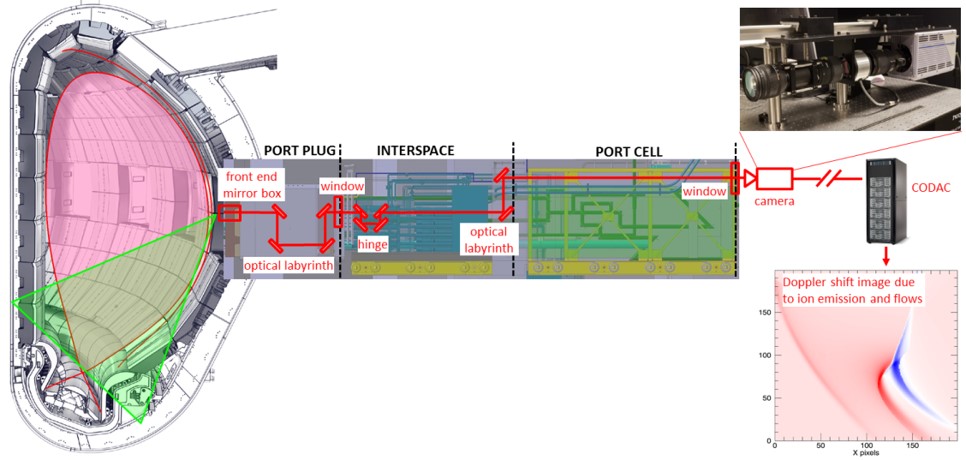The ITER Boundary Imaging System project
Managing fusion reactor exhaust power is one of the major technological hurdles on the path to commercial fusion. Doppler coherence imaging (CI) instruments invented at ANU are uniquely capable of measuring the supersonic plasma flow speeds and extreme temperatures in the ITER plasma boundary and exhaust regions (the divertor).
Doppler coherence imaging instruments invented at ANU are uniquely capable of measuring the supersonic plasma flow speeds and extreme temperatures
The ITER Boundary Imaging System (IBIS) has the spatial and velocity resolution required to address the exhaust problem and map the transport of impurities in the tokamak edge.
Doppler coherence imaging (CI) systems are now operating on the largest and most advanced fusion experiments around the world. Following a successful feasibility study, the IO has now reserved highly prized ITER equatorial port space to install Australian technology – offering us a “ringside seat to the hottest show on earth.”
A Cooperation Agreement between the Australian Nuclear Science and Technology Organisation and the ITER Organization was signed at ITER headquarters in October 2016. The agreement opened the door for Australian instruments and technologies to be developed and installed on ITER and paved the way for Australian participation in the International Tokamak Physics Activity (ITPA), a research and planning forum reserved for ITER partner nations.
Under the first implementing agreement, the Australian team will establish the CAD design and modelling capability to support IBIS. The ANU and IO Central Team will commence detailed design of the optical transmission system in early 2018.

Simple schematic of the ITER boundary imaging system experimental layout on ITER


Top: Optical layout of a polarization sensitive Doppler coherence imaging system and Bottom: The system as installed on the KSTAR Tokamak at the Nation Fusion Research Institute in Korea.

Updated: 1 July 2025/ Responsible Officer: Director RSPE/ Page Contact: Webmaster RSPE





